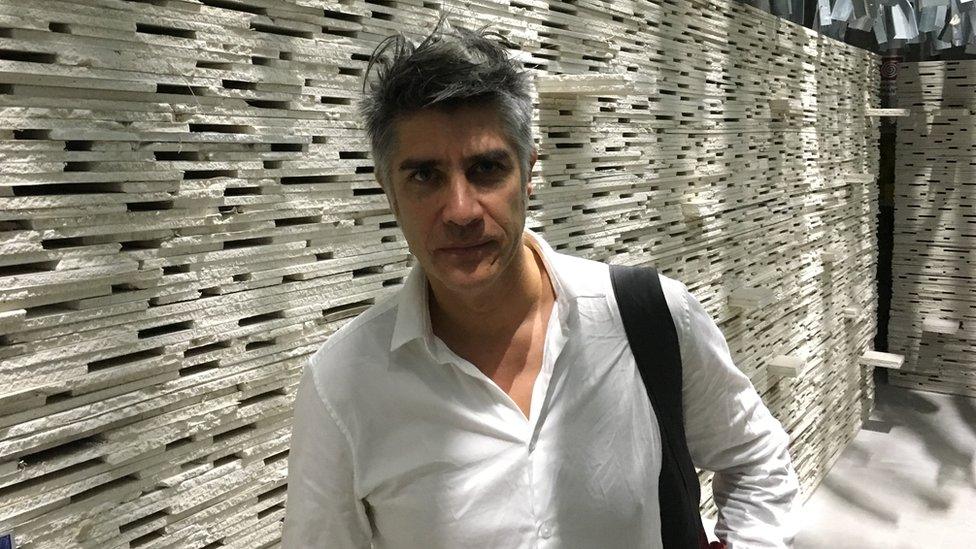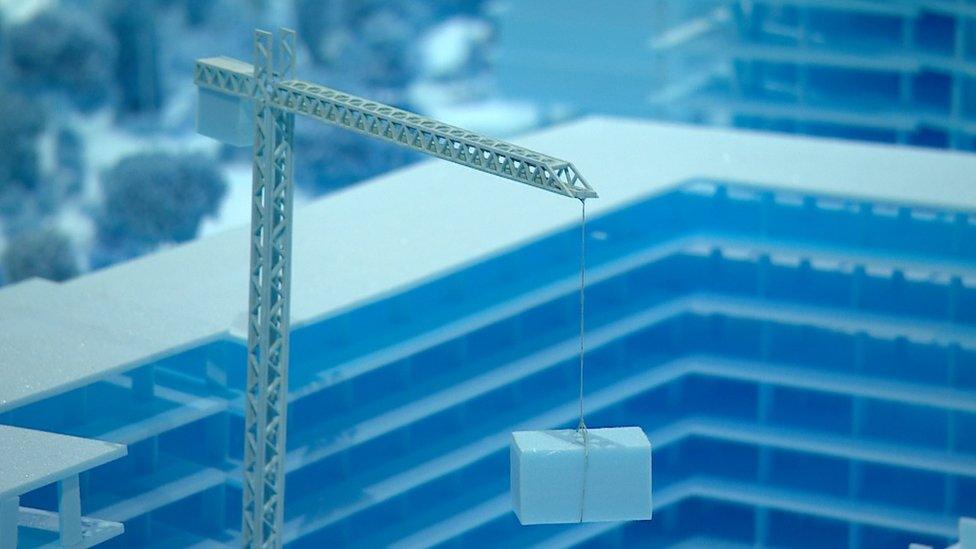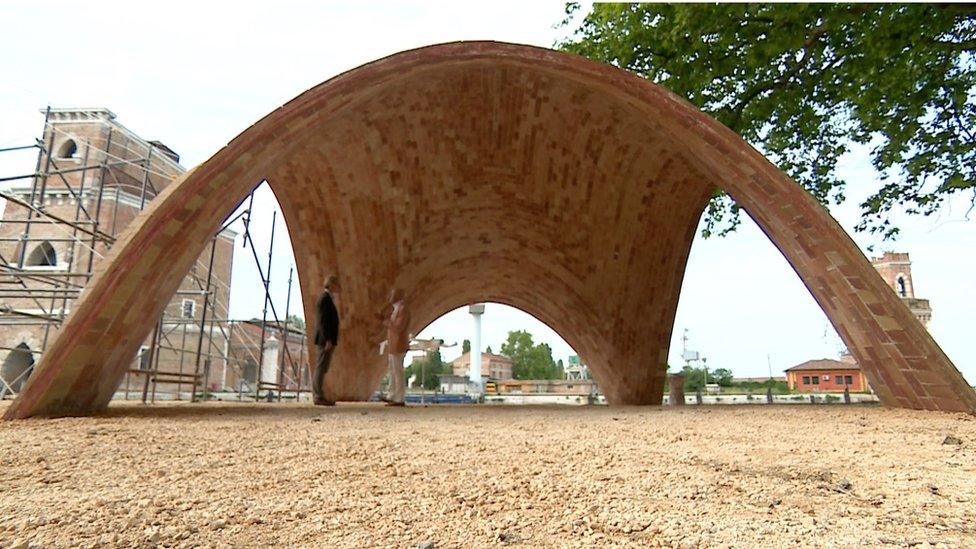Venice Biennale builds a brighter future
- Published

An office made out of a reconfigured water pipe, part of this year's Venice Architecture Biennale
With thoughts on how to house Millenials and designs for an airport for drones, the visionary architects and curators at the Venice Architecture Biennale are looking to the future.
"If we're going to talk the talk, we have to walk the walk," insists the Pritzker Prize-winning Chilean architect Alejandro Aravena - curator of this year's Venice Architecture Biennale.
"[The Biennale] is not about the advancement of architecture but about improving the quality of life… and the way architects try and do that is through the built environment.
"The first thing was to define what are the front lines, what are the challenges, what are the problems?
"Inequality, migration, pollution and the production of waste are the kind of things every single citizen suffers or experiences."
So, instead of "producing more debris", he decided to create the first room of his sprawling exhibition in Venice's Arsenale out of the waste materials from the unwanted exhibition stands used in last year's Art Biennale.

Aravena has created a room out of waste materials
The walls of the room are constructed from 100 tonnes of discarded plasterboard, layered horizontally to look like elegant rows of chalky bricks, while the ceiling shimmers with the effect of a huge mass of misshapen metal studs hanging down like stalactites from above.
For him, "value should not be dependent on the cost of materials, but from the way you deal with them."
It's a point underlined in a modelled plan for how a modern European city might respond, in architectural terms, to a large influx of migrants.
It shows a public realm designed by the architect, around which are a series of low-rise apartment blocks that have been plumbed and wired but have little else - for example, there are no dividing walls or windows.
These, says Aravena, would be supplied by the new resident after taking a trip to the local DIY store. Basic, yes - but far better, he thinks, than a tent in a muddy field pitched on the edge of a city.
i-Generation living
His concerns about the practicalities of city living in the 21st Century are echoed in the British Pavilion, which has been commissioned by the British Council.
Three young curators have presented an exhibition that explores possible answers to the country's housing problems.
An over-sized mock-up of the front door to 10 Downing Street sets their show and ideas into a political context, while questioning the Elizabethan notion of a front door for all.
They argue that our attitude to the home needs to change - it shouldn't be how big it is, but how long do you need it for.

The British designs explore possible answers to the country's housing problems.
Hence, their exhibition starts with A Home For Hours, a crash-pad full of day beds in which resources are pooled for a better quality of life, where domestic appliances, board games, clothes and shoes are shared.
It's an idea that might seem a little far-fetched to some, but for those Millennials who have grown up in an age of student debt and rocketing house prices, it could present a practical solution to a pressing problem.
Another room is a Home for Days, consisting of two "Zorbs", giant spherical inflatables into which you can jump and sleep - the concept being that we already spend so much of our time living in a virtual bubble, why not go the whole hog and live in an actual one?
A Home for Months, meanwhile, is a tiny two-storey tower containing a bed, bathroom and kitchenette - a structure designed to be arranged in rows within a larger room where residents would share communal spaces.
It's a contemporary take on the boarding house: affordable city living for the i-Generation.
'Mind power'
The celebrated architect Lord Foster is also in Venice presenting his latest creation - not, this time, a fancy tower block or gorge-spanning bridge, but a modest, vaulted brick-built building which he claims to be the world's smallest airport.
It's the next stage in a project he's being working on for some time, which would see this "drone-port" installed in Rwanda as a base from where remote-controlled machines can take off and deliver much needed supplies to inaccessible areas.
It looks a little like a mud hut, but is actually a highly complex computer-based design that is the result of a partnership with the Massachusetts Institute of Technology.

Lord Foster's 'drone-port' is a collaborative project with the Massachusetts Institute of Technology
With the aid of cutting edge computer science and buried steel tension ropes, the largely self-supporting structure uses a fraction of the materials such a building would normally need and can be made with minimum expertise.
It's a project that fits perfectly with Aravena's vision for this Biennale.
"The scarcer the resources, the greater the need to think creatively about the use of those resources - and that, in the end, is down to mind power, it is creative.
"To build quality projects doesn't mean you have to have costly materials."
The Venice Architecture Biennale runs from 28 May to 27 November 2016.